SIGHTING IV
SIGHTING is a scupture by Hildegard Rasthofer and Christian Neumaier that is over 30 m high and can be entered by visitors. The mSE Kunsthalle had loaned the artwork to Flossenbürg in Upper Palatinate where it has been installed for the 4th time from June until fall. On a hill above the concentration camp memorial, SIGHTING opened a thinking space for visitors.
The artwork
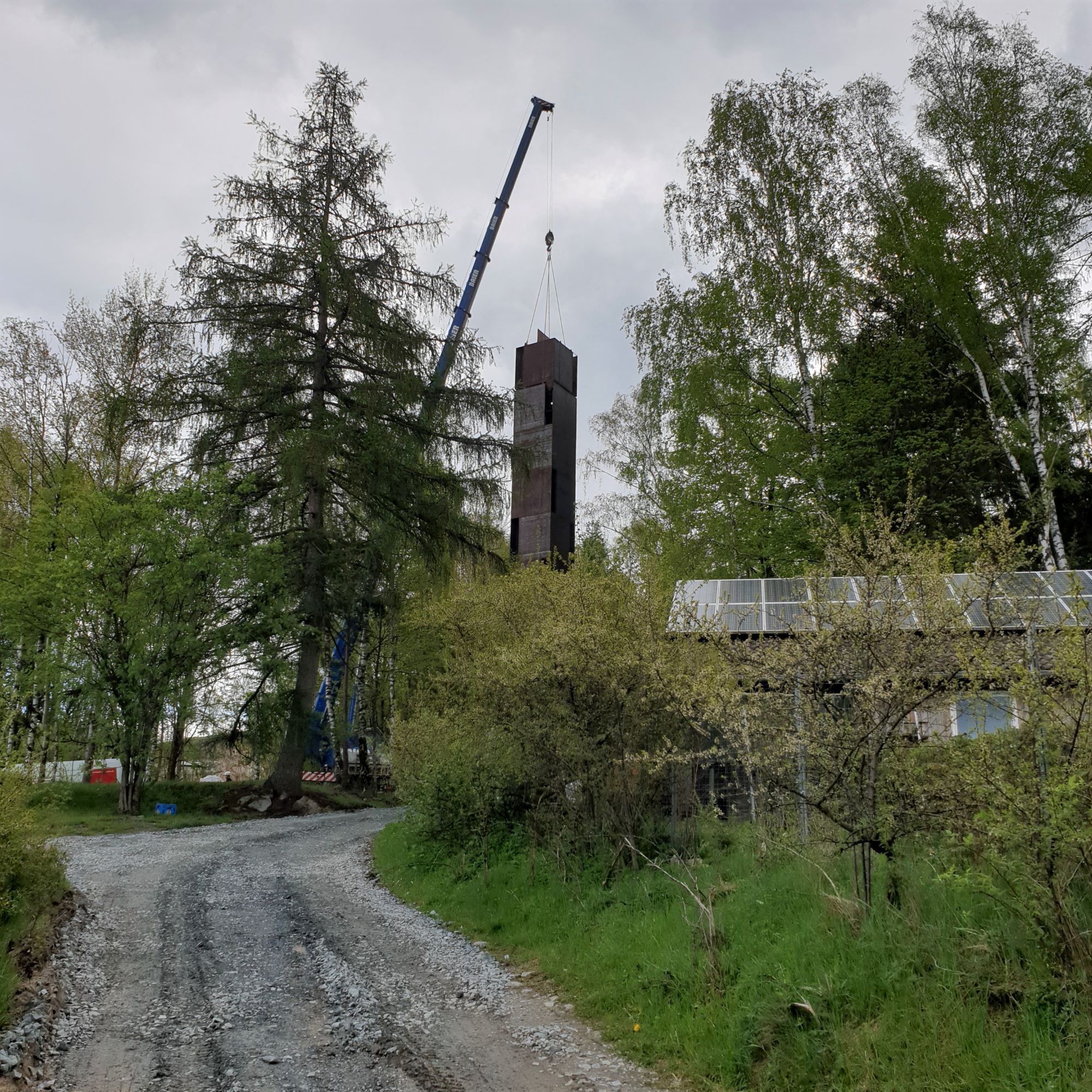
On its new temporary location, SIGHTING, for the first time, towers over a forest.
70 mobile tonnes of steal
SIGHTING consists of steal cubes with a lenght of 2.4 m each and a steal ring on the top. On its location in Flossenbürg, the sculpture has a hight of 32.4 m. The cubes are put on top of each other via crane and then screwed together. The sculpture can be assembled and disassembled within a few hours. It is conceived as a mobile installation. In any event, the sculpture is also a remarkable technical achievement.
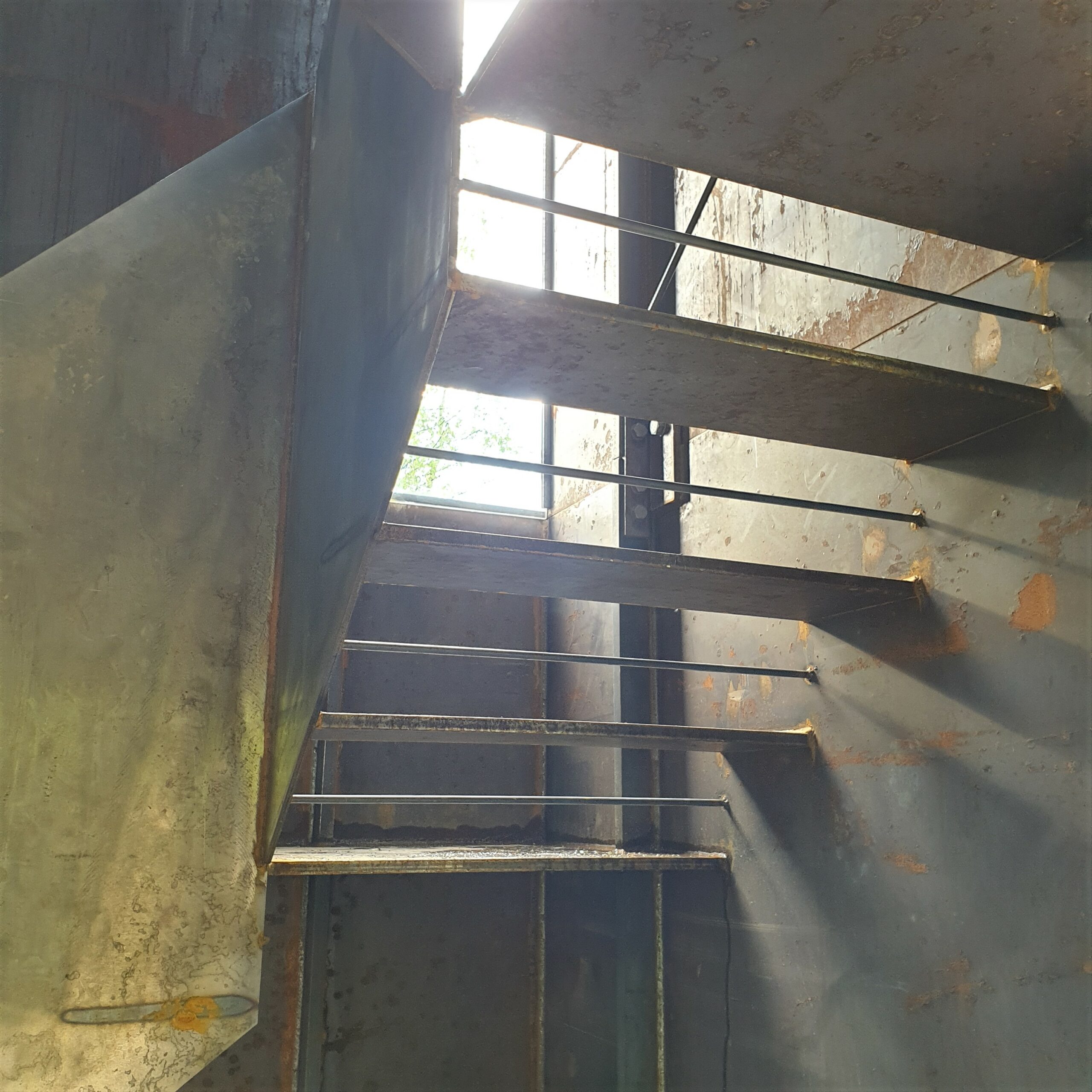
All the steal pieces of the artwork vibrate and resonate under the visitor's steps.
Spatial and sound sculpture
Moving inside of the artwork, the surrounding space can be experience in a special way: The vertical movement allows to explore the volume of the sculpture, and the space around it from an elevated perspective. The environments sounds, the wind, the visitors steps and breath create a world of sound of its own.
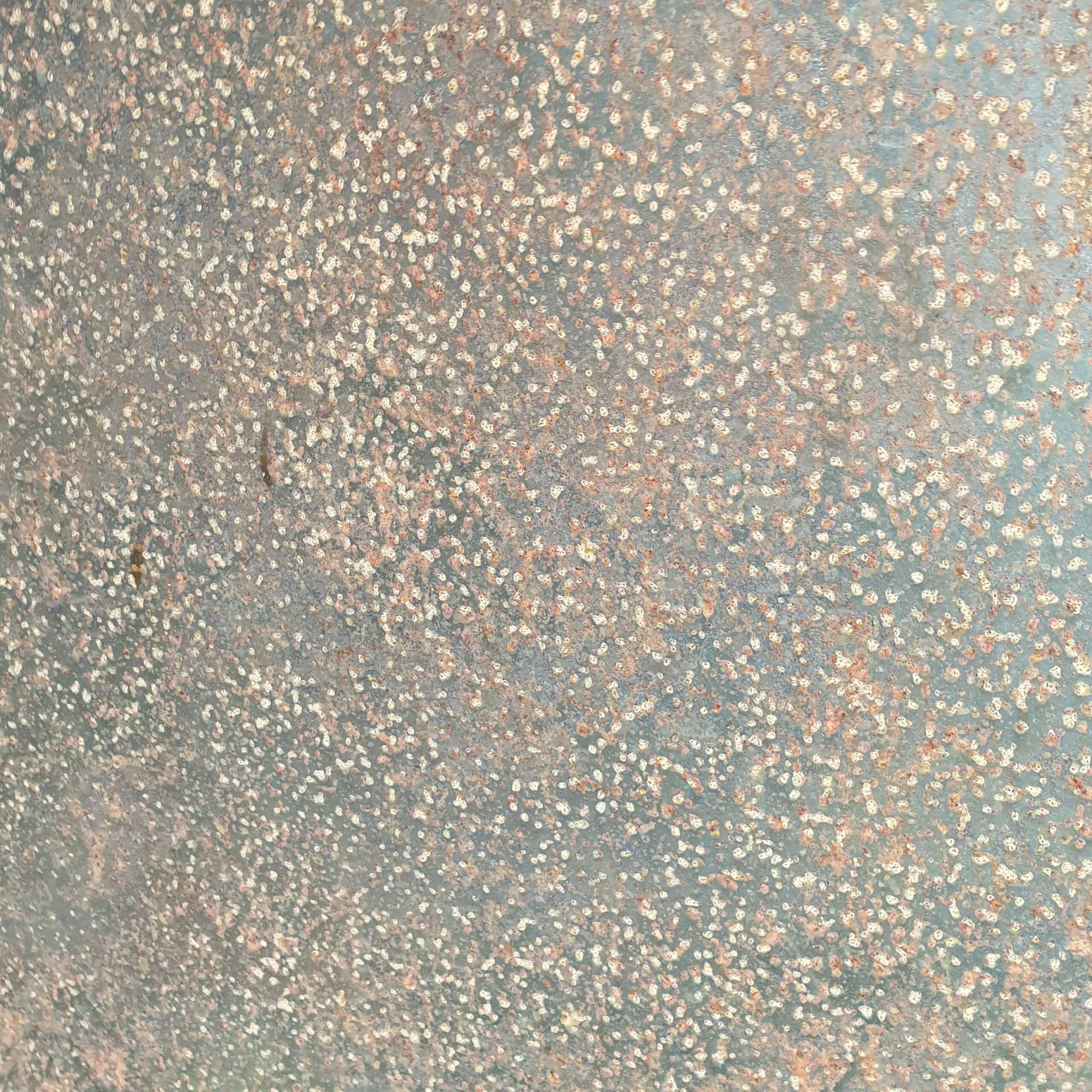
Drops of corrosion, that have altered the artwork since its last installation in Unterammergau.
Materiality
The construction steel has a changeable, multifaceted surface: blank, injured, patinated, different stages of corrosion. Light, wether, and the point of view of the spectator alter the colors of the material, ever changing between silver, grey, blue, green, red, orange, brown, and black.
The Artists
Hildegard Rasthofer, architect and artist, was born in 1968 in Wartenberg. She studied architecture at the TU Munich. Christian Neumaier, born 1965 in Haag, is a metal sulptor and maste blacksmith. As an artist, he coöperates with Hildegard Rasthofer in the interdisciplinary field of experimental architecture and sculptural creation.
>>Every visitor leaves by means of movement a specific pattern of sound in the sculpture -- a trace of sound.<<
(Hildegard Rasthofer, Christian Neumaier)
The location
>>The sculpture moves to places where an exciting interaction with the environment happens.<<
(Hildegard Rasthofer, Christian Neumaier)
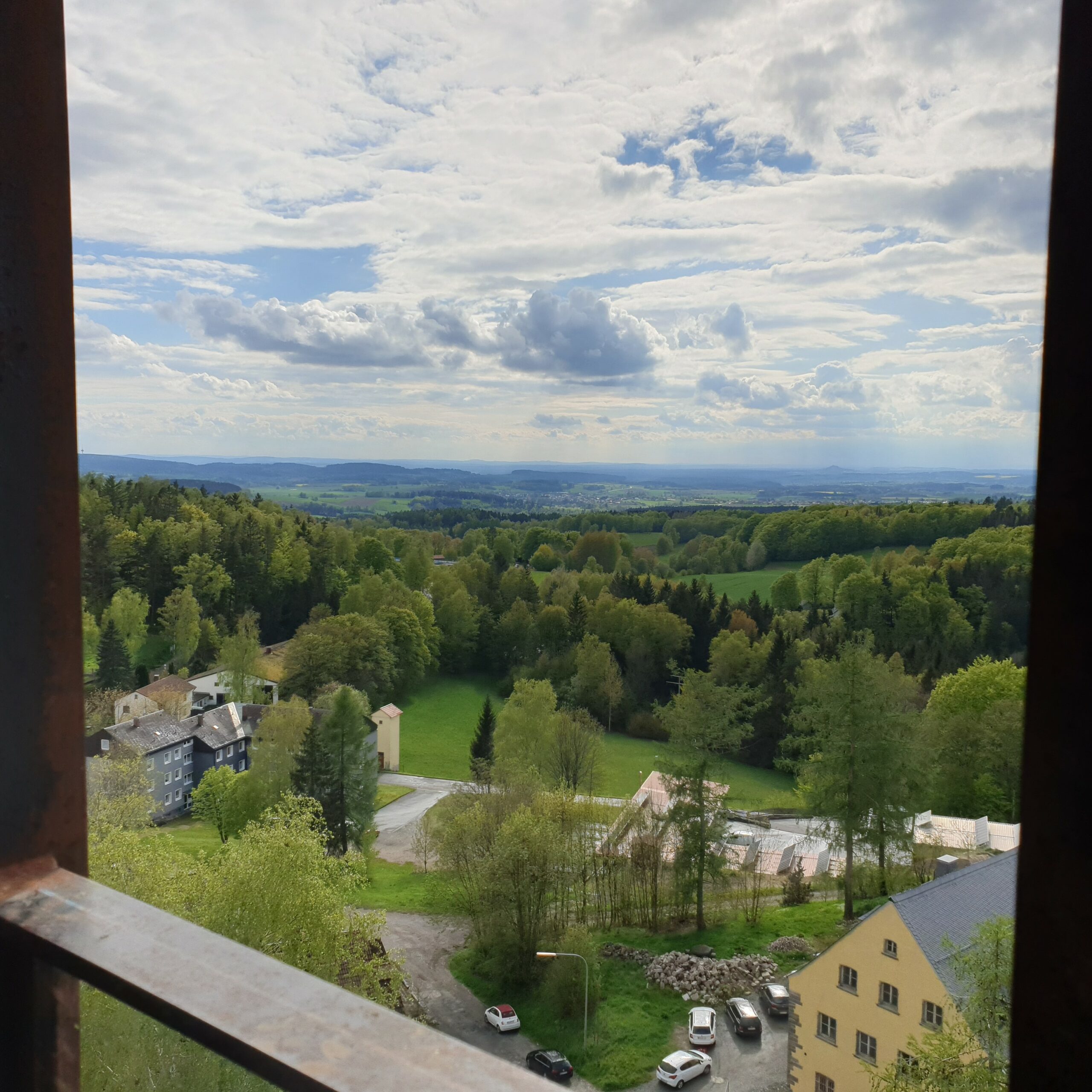
Through one of SIGHTING's windows you can see the distant landscape, the houses of the young town Flossenbürg, and the administrative buiding of DESt (right).
Land art
On its different locations, the sculpture enters into a dialogue with the surrounding landscape. The deep windows and the sculptures top allow for fresh frames and points of view. In turn, seen from below, the sculpture may appear as a mark in the landscape. Therefore, it has an index. In Flossenbürg, on its 4th location, it has the index IV.
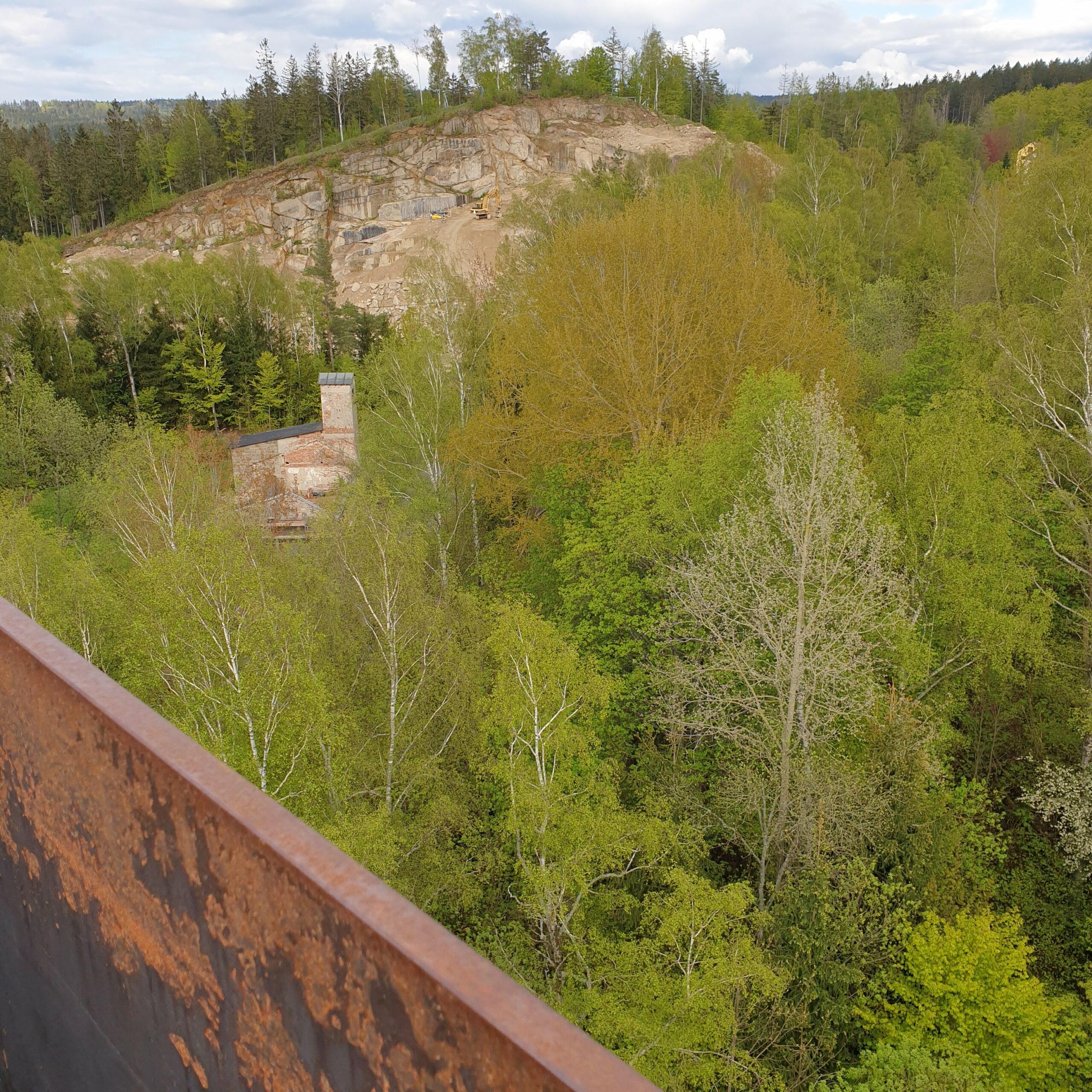
The granite quarry next to the location is still active today. The prisoners of the camp were forced to quarry there by the SS.
Mark
On its first location, in Reithofen, the sculpture hat marked the contrast of horizontal and vertical lines in the gravel planes north of Munich. On its second location, in Munich's Kreativquartier, it became a mark of urban development. In the sculpture garden of the mSE Kunsthalle, SIGHTING was standing above the Pulvermoos, a moor between Obeammergau and Unterammergau. The slopes of the surrounding mountains towered over the slender cuboid, which highlighted the width and curves of the valley. On its 4th location, the artwork, for the first time, enters a historic and political context.
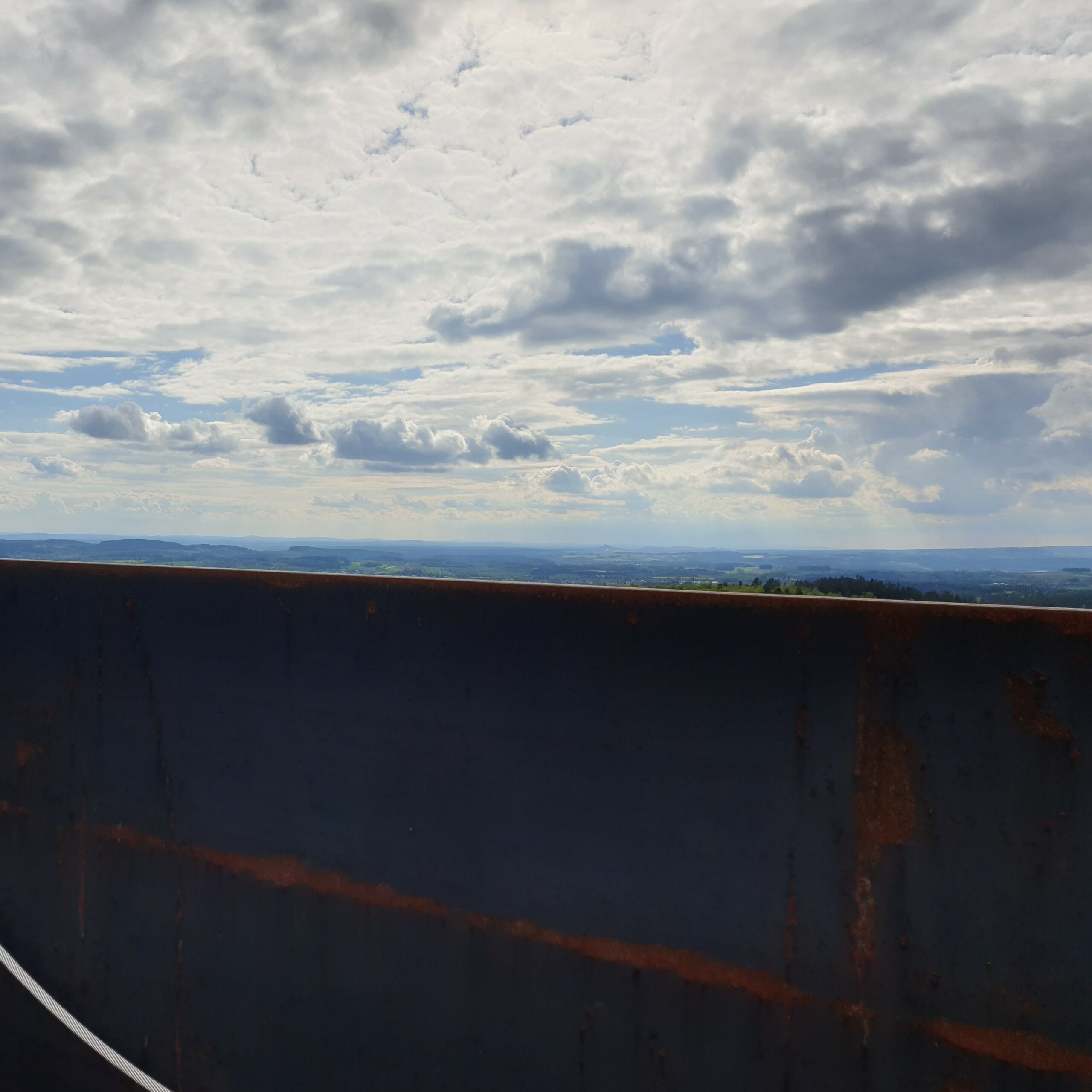
Perspectives
From the sculpture and its top, the surroundings appear in ever new frames: The young town of Flossenbürg, the medieval ruins of a fortress, the active quarry where the camp prisoners were forced to quarry granite. The concentration camp memorial and its historic buildings are hidden by the trees on the hill, and yet remain ever present.
History
In 1938, the SS opened a concentration camp in the small town of Flossenbürg, where, since the turn of the century, granite had been quarried. Flossenbürg became the center of an expansive network of subcamps. In the later years of the war Flossenbürg and its subcamps were mostly involved in the armaments production for Messerschmitt among others.
After the war, a town grew over the former concentration camp. It was only in 1995, that the current memorial was founded, which should lay bare the many layers of history, memory and repression. Ever since, the memorial has tried to critically and sensitively reflect the forms of rememberence, research and commemoration. 2014 it was awarded the European Museum Award.
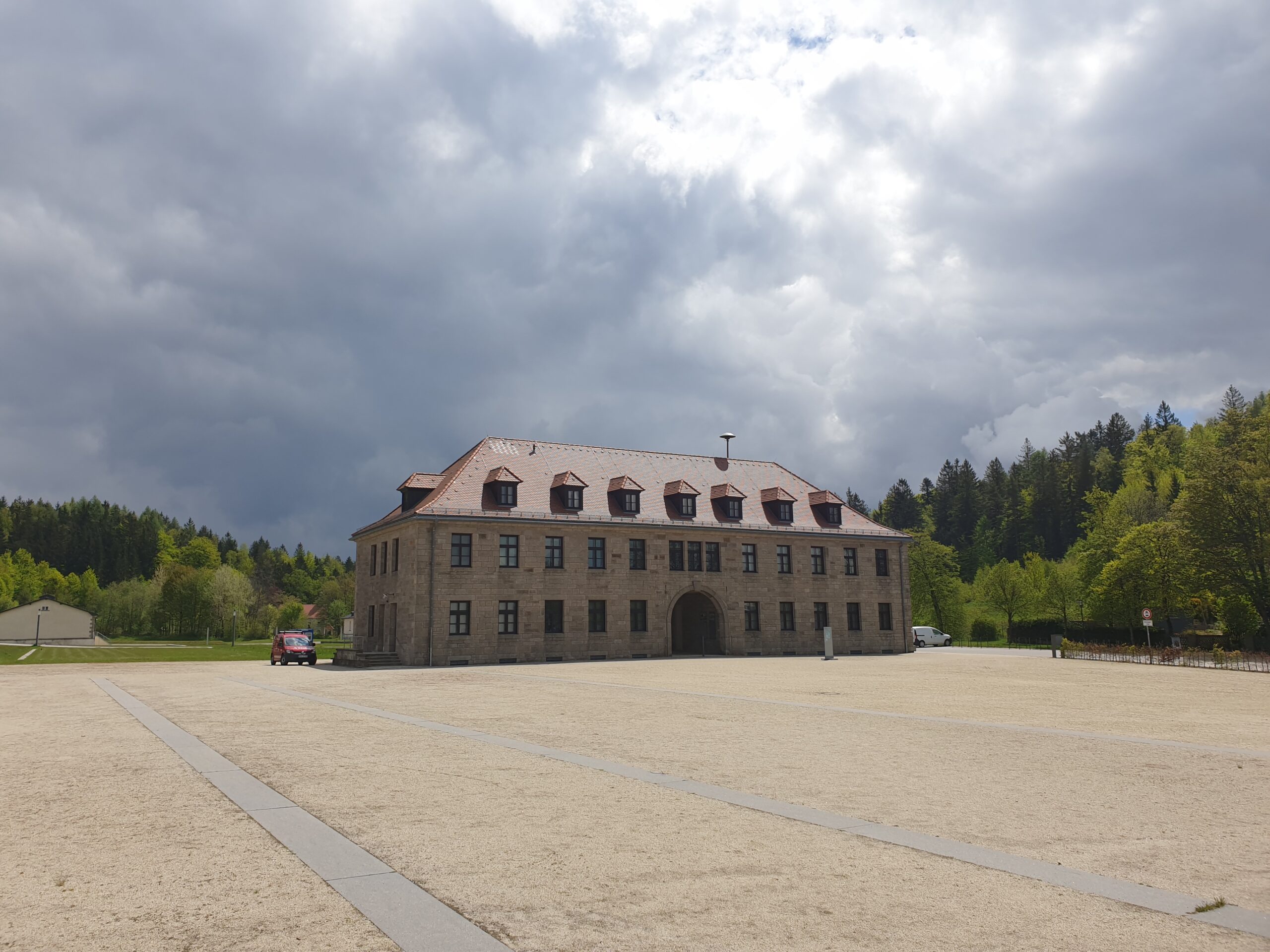
The Kommandantur (commandment's headquarters). In May 1938, the first prisoners were brought from Dachau to Flossenbürg. In February 1945, 14,800 people were imprisoned in the concentration camp.
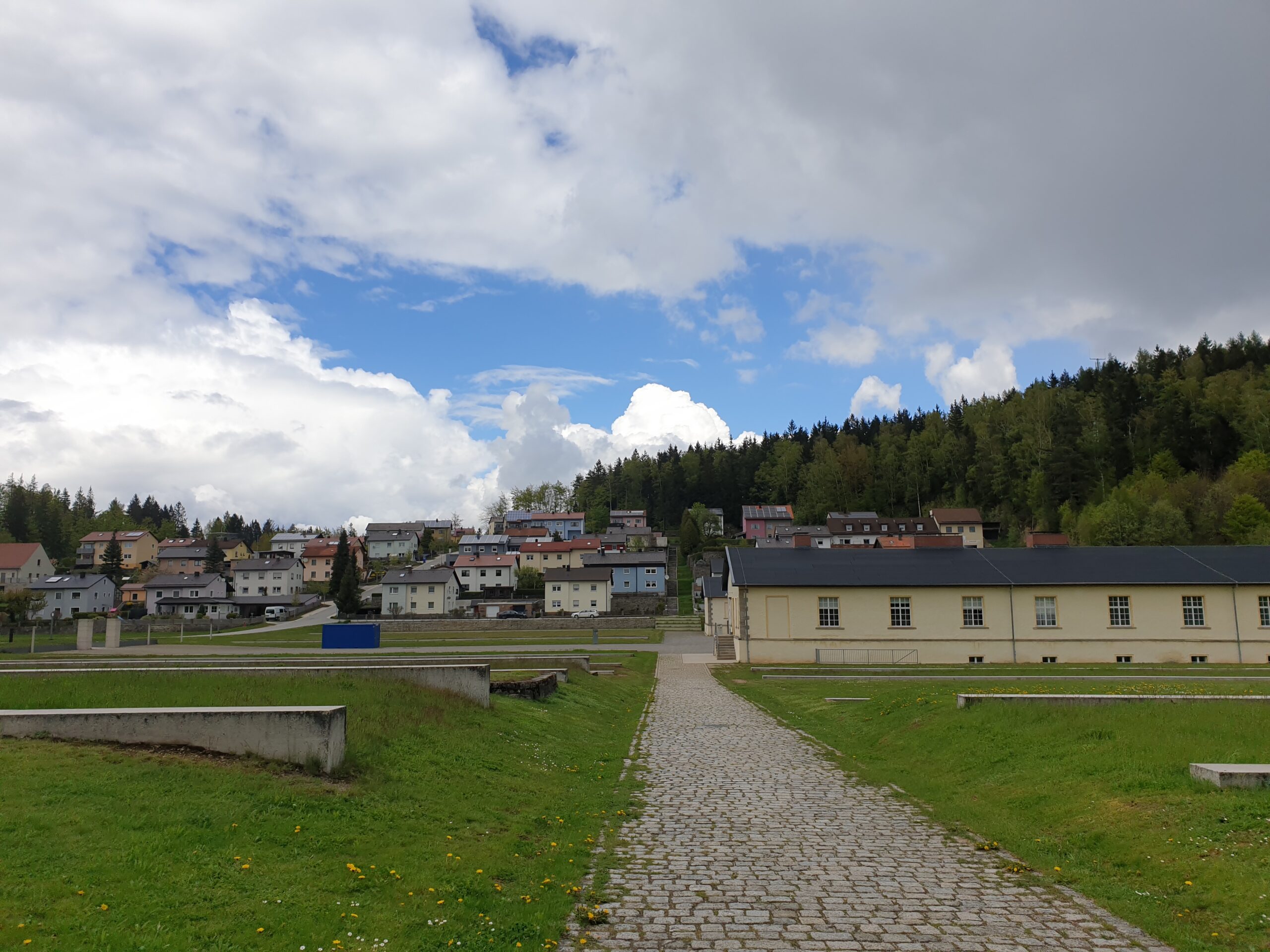
After the war, the town of Flossenbürg grew over the former camp. The industries were kept, workers and expellees moved there. The private houses today border on the former prisoners camp.
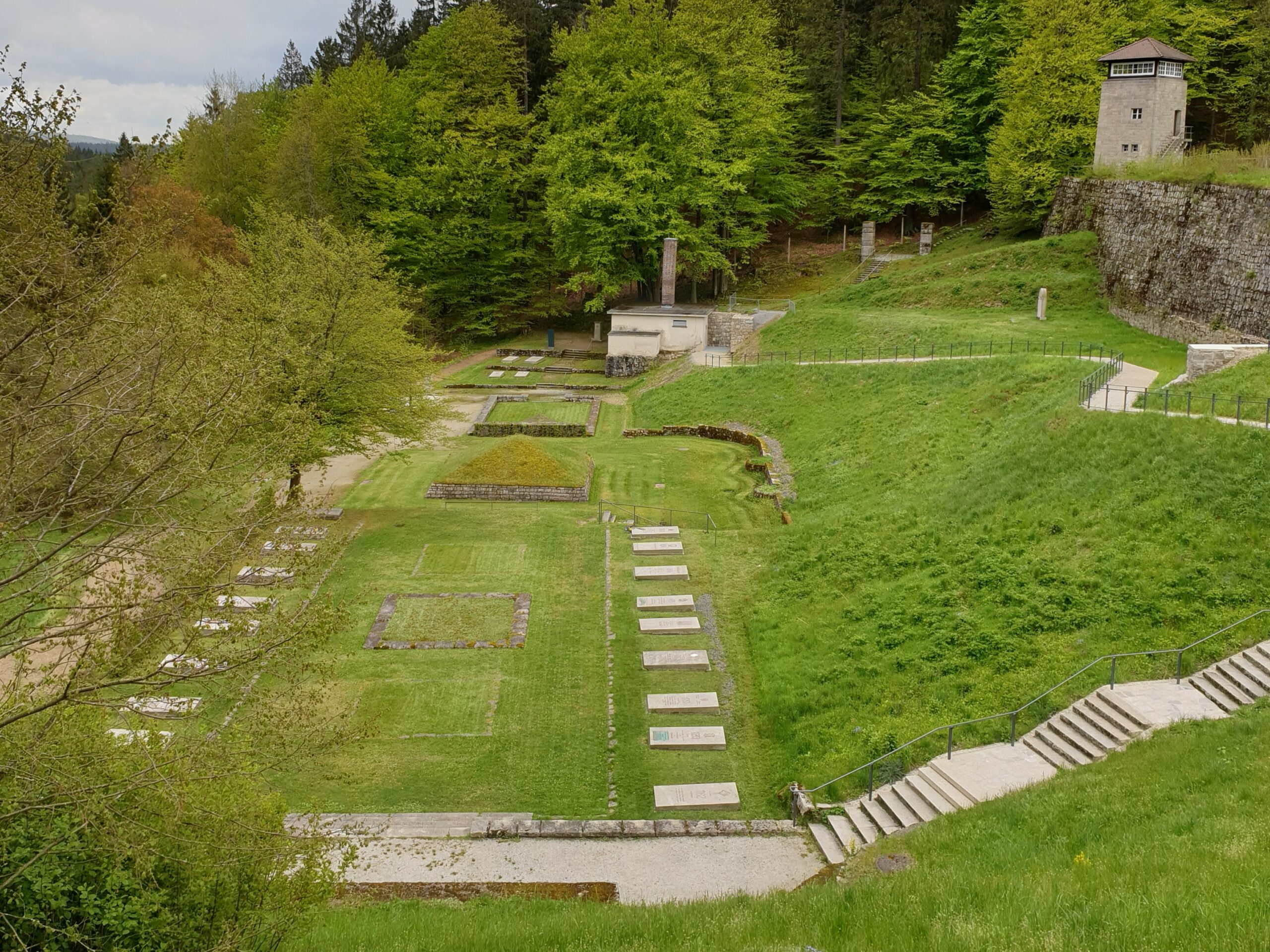
Behind the prisoners camp, the "valley of death" is located, where prisoners were executed and where the crematorium was located. In this area, the first memorial place was installed after the war, while the upper part of the concentration camp was only layn open much later.
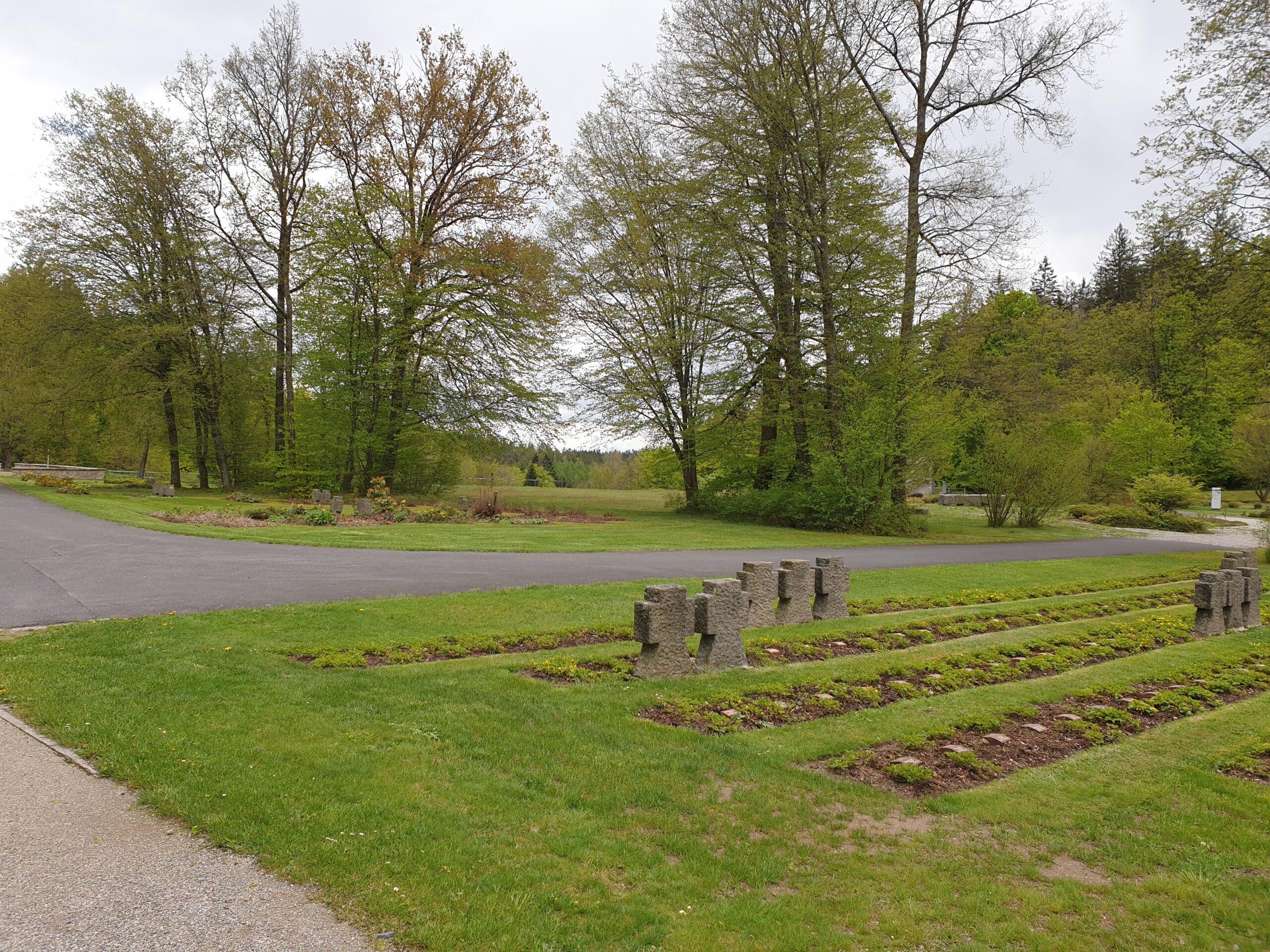
From 1957 until 1960, a cementary of honor was established in Flossenbürg, to where the remains of former inmates that had died on the death marches at the end of the war were transferred. The cementary has more than 5,500 individual graves.
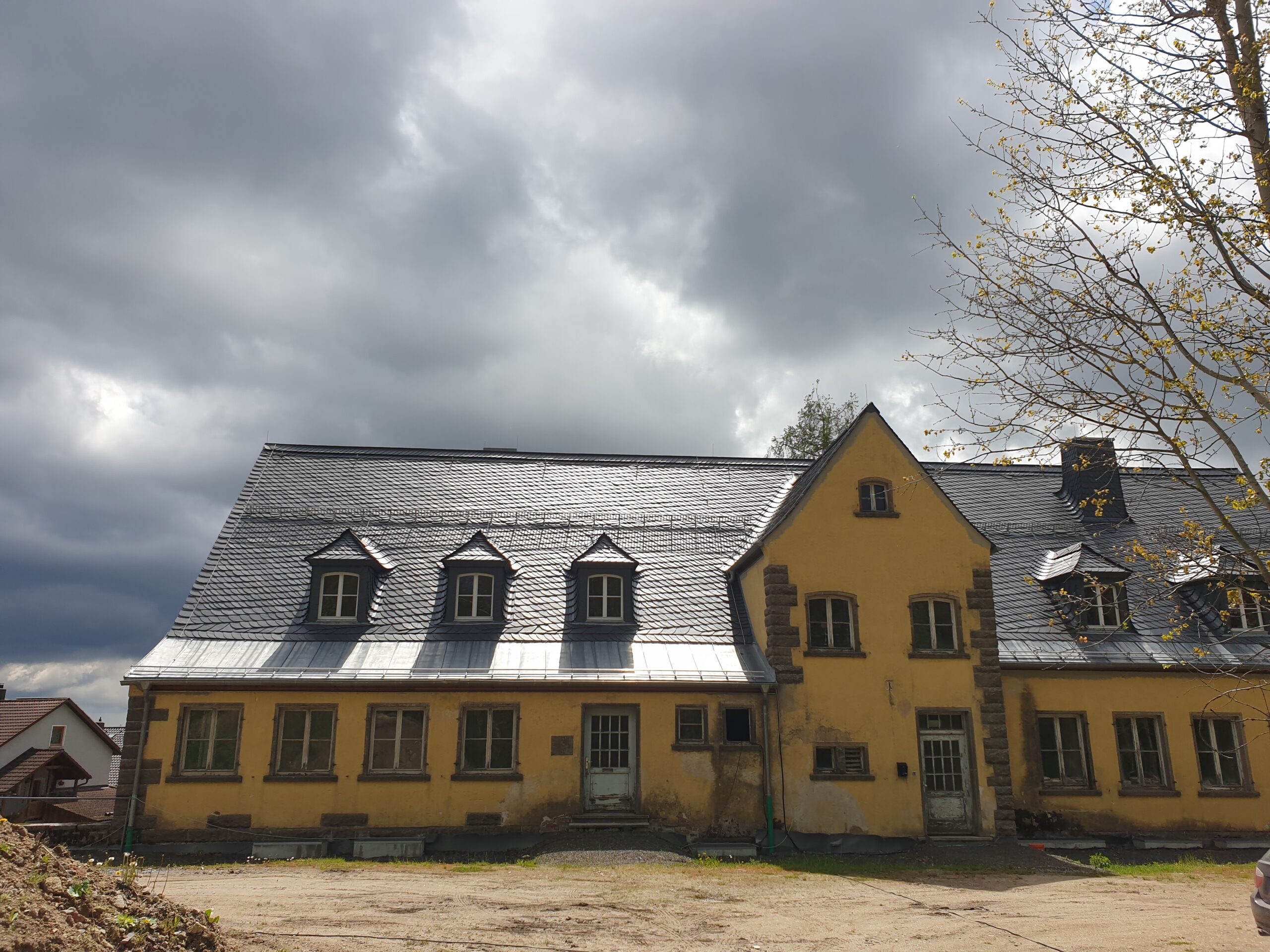
Above the quarry and next to SIGHTING's installation spot, was the administrative building of the DESt, a mining company that was owend by the SS and run for profit through forced labor in the granite quarry. From 1942, Flossenbürg became the center of a net of almost 80 subcamps that were located from Würzburg to Prague and from Lower Bavaria to the North of Saxony. 1943 Flossenbürg became involved in the armament industry. At the end of the war, 5.000 prisoners were forced to work for Messerschmitt.

The ruin of the fortress of Flossenbürg (founded around the year 1100) can be seen from SIGHTING as well as from the luxurious administrative building of the DESt. Back then, the fortress was rebranded as a sign of German strength against the Slavs. Today's Czech border is only 5 km away from Flossenbürg.
Voices
With SIGHTING we open a space to think, not just to commemorate. We find ourselves in an area, of which one does not see its past at first glance, but that was shaped by history everywhere, covered in layers. SIGHTING is an opening. It allows an approach to the location and opens up a new space. Seven decades grew over the concentration camp Flossenbürg. We see the young town Flossenbürg in a beautiful landscape, as was the landscape in Unterammergau, with a history of commemoration and memory. The square shape of the sculpture allows to bring together different directions and views, and will thus enable the visitors to open up the different layers, carefully and on their own. We do not want to occupy the space, we want to open it. For that purpose, there is no better artwort than SIGHTING. It appears as if the sculpture had been created for this location. That shows the quality of the sculpture, that opens up a new context for itself on each location. Every place enriches the trace of the artwork and makes it more complex. Flossenbürg will change all future locations. It is no longer the same artwork that has come to us from Unterammergau.
Prof. Dr. Jörg Skriebeleit, Director of the memorial site
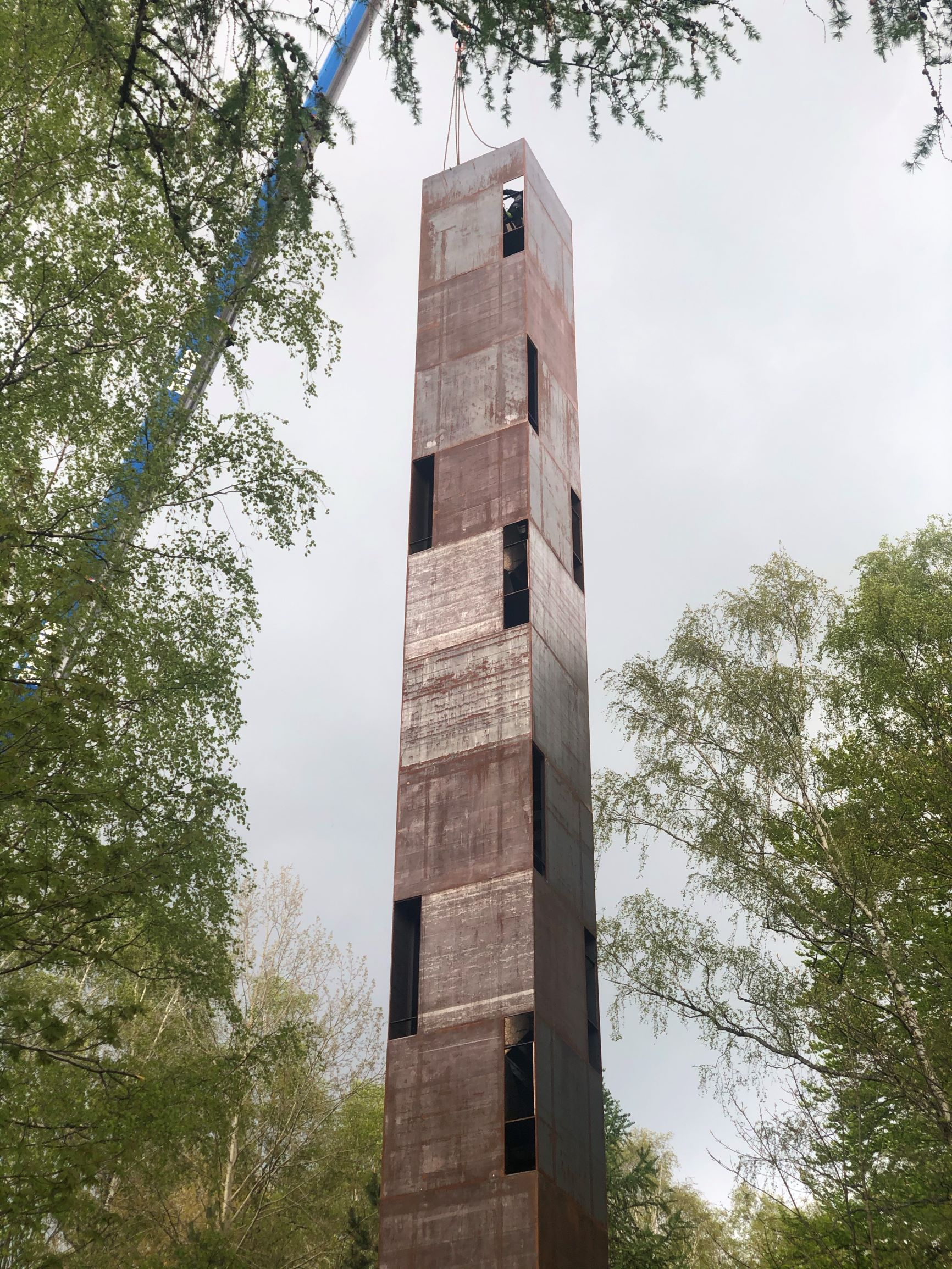
During the installation, I heard again from people that were passing by, that the sculpture looks as if it had always been there. I always think that's great. The setting between the trees here is new. You go up in the trees, then, suddenly, when we rise above the tall trees, the horizon opens up. The inside of the sculpture is also always different, depending on the location. The expectation with which the people will enter the sculpture, here, is very different from the prior locations. The forth location is charged with the past, there are layers of different pasts. And yet, I think that SIGHTING will sill add another possibility to experience this place in a new way.
Hildegard Rasthofer
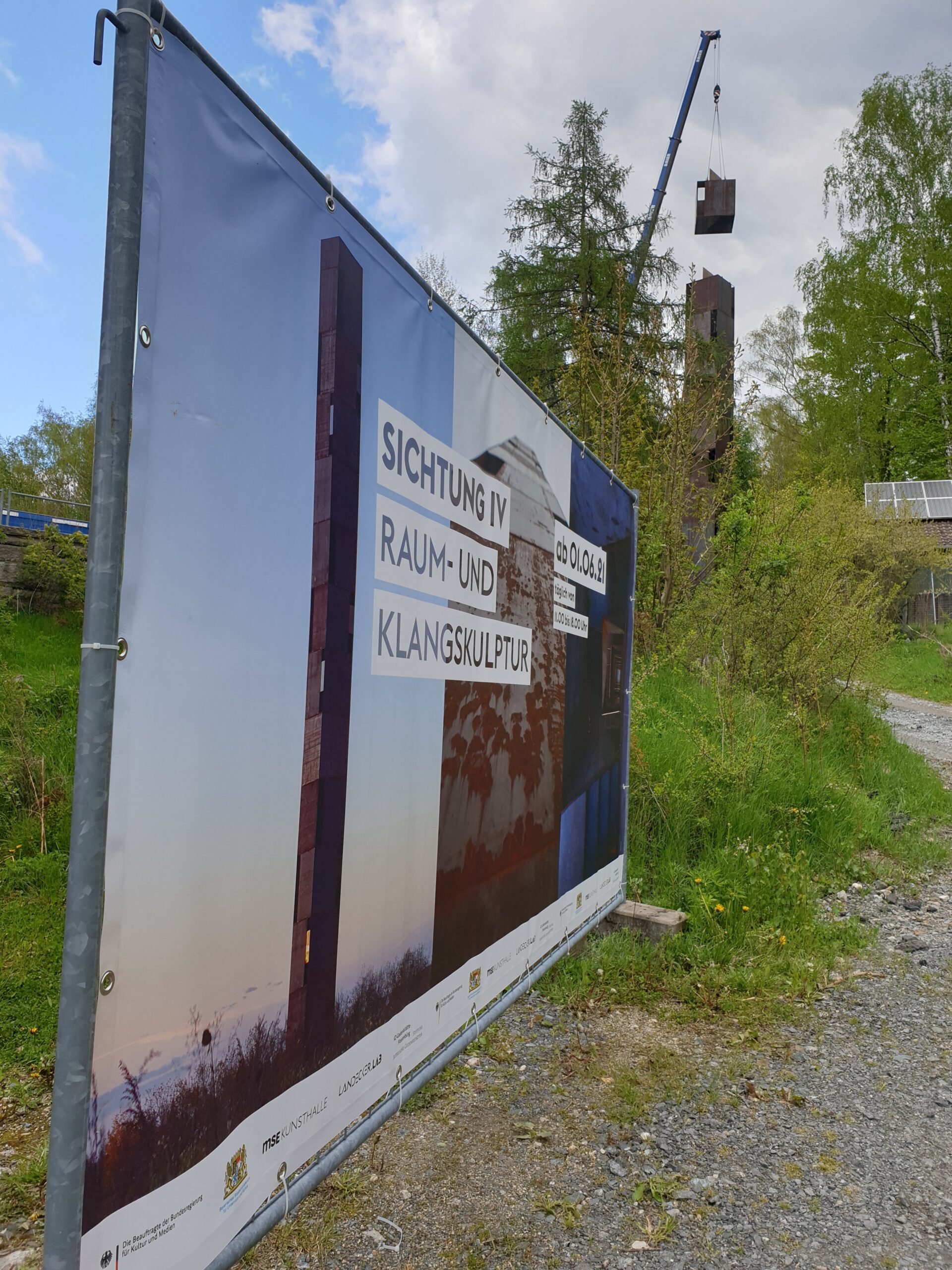
The artwork comes alive throgh its dialogue with the place in which it is installed. It challenges the visitors to reflect and to sight, and it does not do the job for them. In every landscape there are many layers of the past, but also of the present and the future that can be exposed. SIGHTING is a an outstanding occasion to do so.
Christian Zott